If you didn’t read the first post in this series, then you should know one thing right up front: my opinion of “helpful” literary analysis websites like Sparknotes, GradeSaver, and Schmoop is not great, to say the least. But when it comes to those websites’ analyses of Homer’s Odyssey…I physically have to repress the shudder.
The Odyssey is a classic! As The Princess Bride‘s Peter Falk would say, it’s got everything–fighting, torture, revenge, giants, monsters, chases, escapes, true love, miracles… How could you turn that down? More importantly, how could you settle for the literary butchery of this text that goes on over at Sparknotes? (Sorry, not sorry.)

Source: Giphy
No–The Odyssey deserves thoughtful analysis, awed appreciation, and delightful enjoyment. Yes, I said enjoyment. Doubting me? Keep reading.
For those still struggling to understand Homer’s basic plot and themes, I only ask you to remember The Princess Bride‘s basic plot and themes.
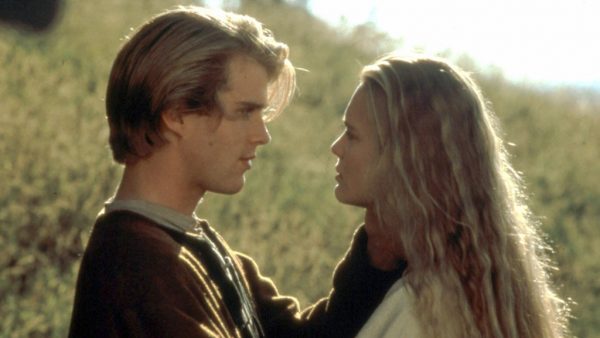
Source: Movie Fail
- Buttercup, a beautiful young maiden, falls in love with Wesley, a handsome, witty young man
- Wesley goes off to distant lands
- He gets into trouble and is presumed dead
- Buttercup is courted rather aggressively by a wealthy suitor, but she does not love him and attempts to resist him
- Wesley returns after years to reclaim what is his
- He fights in competitions of strength, cunning, and talent and (inconceivably!) defeats all foes
- Wesley finds Buttercup but is in disguise, so she does not recognize him
- Buttercup tests Wesley, and he immediately reveals his true identity
- The aggressive suitor is defeated, and true love prevails
(Yes, I know–I’m skimming basically everything that happens post-Fire Swamp. Just ignore that part.)
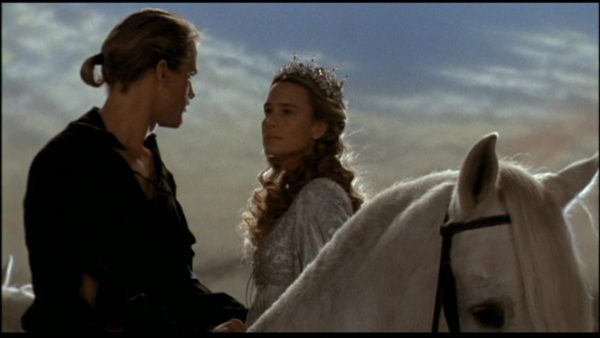
Source: Fanpop
That’s basically what The Odyssey is, except with a lot more monsters, allusions, and poetic language.
Homer’s Iliad:
- Odysseus (who happens to be handsome and witty) and Penelope (who happens to be young and beautiful) are deeply in love and rule an island called Ithaca
- When the Greeks declare war on Troy, Odysseus joins them in that distant land. That war lasts ten years
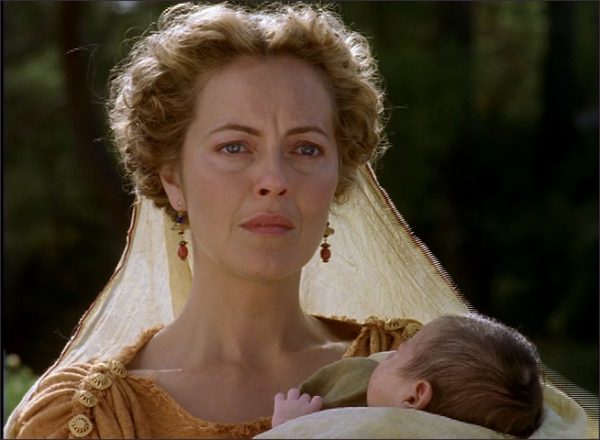
Source: Storify
Okay, Odyssey time:
- The Trojan War is finally over, but Odysseus gets into trouble on the way home and is presumed dead by his loved ones
- Penelope is aggressively courted by several wealthy suitors, but she does not love them and cleverly resists them
- Odysseus fights battle after battle, monster after monster, and finally makes it back to Ithaca. There, he participates in competitions of strength, cunning, and talent and defeats all foes.
- But wily Odysseus has disguised himself, and it’s been 20 years since he’s been home. Penelope does not trust that Odysseus has truly returned. She tests Odysseus, he proves his true identity, they’re reunited, and the evil suitors are at last defeated. The End.
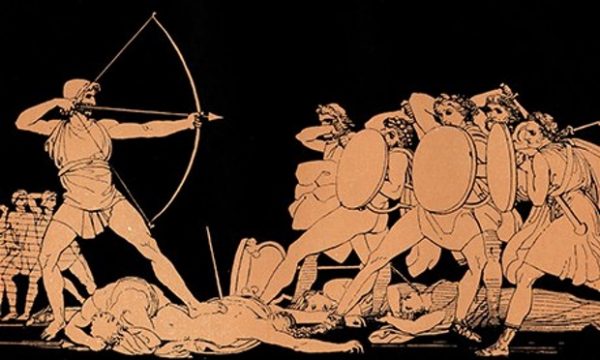
Source: The Guardian
Get it? A lot of the exact same stuff in both stories–disguise and recognition, homecomings, heroism, revenge, temptation and loyalty.
But that’s just a basic (and I mean REALLY basic) explanation of the plot and some of the basic themes. It’s time for analysis. Obviously, this will barely scratch the surface of the surface–The Odyssey is immensely complex and has enough material to be its own course at college. But you do need a few starting points.
Things To Think About:
- Like I said in the first post, I highly recommend that you check out reputable scholarly sources, like articles on JSTOR. And not just literary analysis articles–for a text like this, it would be invaluable to learn a bit about ancient Greek culture as well.

Source: SFF Audio
- Parallelism: Almost everything in The Odyssey is a mirror. Telemachus’s adventures mirror his father’s, he and Odysseus face the same temptation (to be happy and content with non-stop party time, or make the dangerous choice to do the right thing), and Telemachus learns to start mirroring his father’s character traits (cunning and deceit) by the end of the book. What else is a mirror? What is the significance of it being a mirror? What is a mirror, but just a little bit warped?
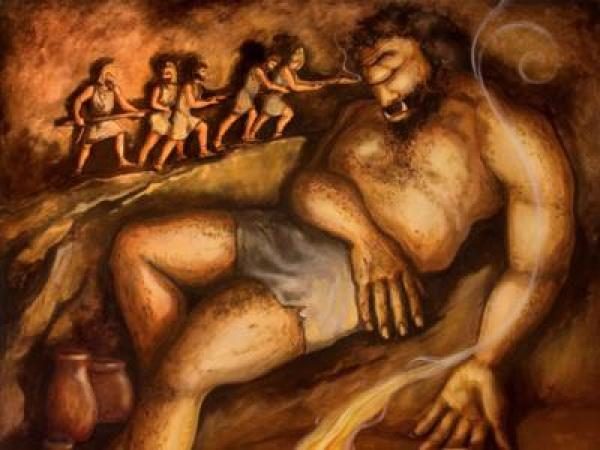
Source: Travel-Studies
- Consider the culture: Homer’s Iliad and Odyssey (though there is some debate about whether or not The Odyssey was written by another poet) are set in the Mycenean Era. And there are some important things to know about that period.
- The oikos (household) is both a political and domestic structure. It must have order, and an authority figure to maintain that order, in order to remain healthy. Not only is the palace at Ithaca an oikos without order (Telemachus has not stepped up as an authority figure), none of the other households are either. Odysseus took all the suitors’ fathers with him to Troy–none of those miscreants know how to behave in a well-run household because the entire middle generation is missing. And (mirror time) the gods are no exception. Think about their divine oikos, the authority figures, and how order is (or isn’t) maintained.
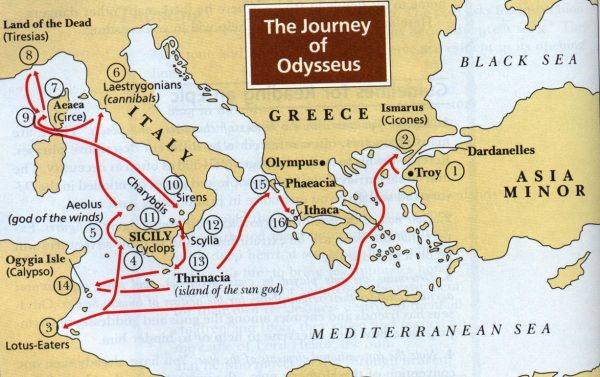
Source: Mediterranean Comeniusper
- There’s a lot to keep track of, action-wise, in The Odyssey. There are dozens of characters, sub-plots, tangents, and long-winded stories to follow. It’s almost as bad as Ovid’s Metamorphoses. If you’re having trouble, don’t worry about it. Make sure you’re solid on the main plot, the main characters and themes (and if you have to make charts or narrative maps, no judgment. They do help), and then go back and work your way through all the minor stories and references.
Good luck, everyone!
https://www.youtube.com/watch?v=2IiP74_5Mnc
YouTube Channel: APLV Blog
Featured image via Amazon



